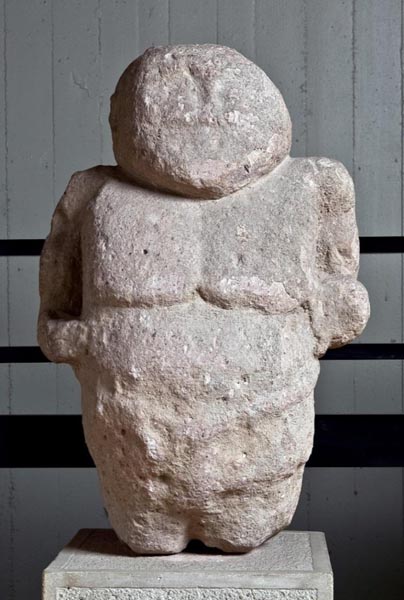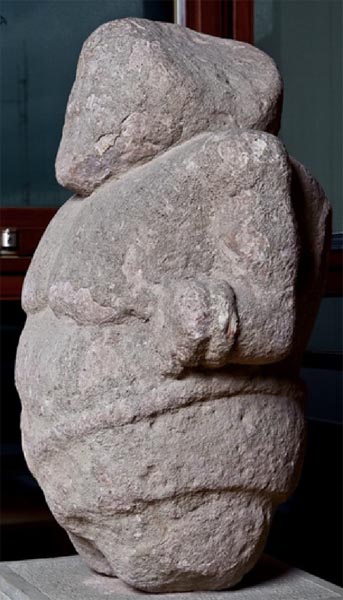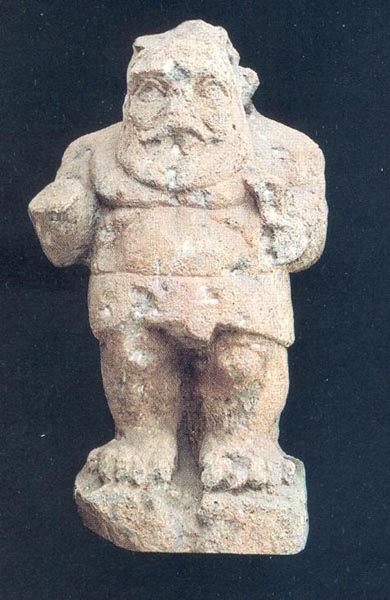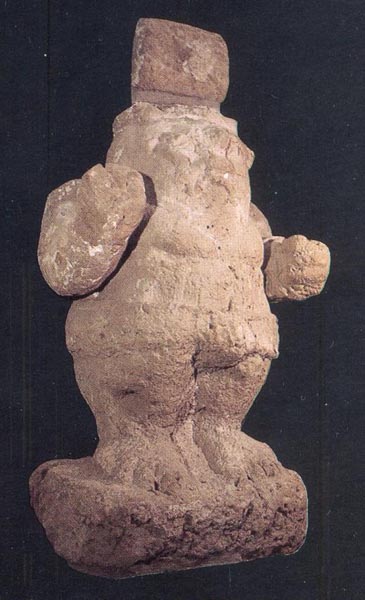Statue of Bes II
The small statue (figs. 1-2) is very ruined, as it has lost its arms and forearms, and the surface is considerably eroded.

Fig. 1 Statue of Bes/Asclepius from the Baths area (photo N. Monari - RAS Archives).

Fig. 2 Statue of Bes/Asclepius from the Baths area (photo N. Monari - RAS Archives).
It portrays the god Bes, an Egyptian Pantheon divinity passed to the Punic one and then to the Roman one. The divinity is portrayed as an ugly, obese midget, yet beneficial and healthy. That is why is often assimilated to the healthy god, Asclepius.
The statue has details of the belt covering the lower abdomen, and the chest's anatomical notation.
The Bes one is a popular cult, widespread in Sardinia in the late Punic and Roman periods, as the statues found in Cagliari (fig. 3) and Bithia (Torre di Chia-Domusdemaria) (fig. 4) show.

Fig. 3 - Statue of Bes from Cagliari. III-I cent. B.C. (from Barreca 1986, p. 137)

Fig. 4 - Statue of Bes from Cagliari. III-I cent. B.C. (from Barreca 1986, p. 137)
Bibliografia
- F. BARRECA, La civiltà fenicio-punica in Sardegna, Sassari 1986.
- G. GARBATI, Il tempio "di Bes" e i "devoti sofferenti" di Bithia. Memorie locali e attualità del culto, in Tortosa (ed.), Dialogo de identitades. Bajo el prisma de las manifestaciones religiosas en el ambito mediterraneo (s. III a.C. - s. I d.C.), Merida 2014, pp. 289-302.
- A. STIGLITZ, Bes in Sardegna, in S. Angiolillo et alii (edd.), Meixis. Dinamiche di stratificazione culturale nella periferia greca e romana, Roma 2012, pp. 133-151.
- A. TARAMELLI, Fordongianus. Antiche terme di Forum Traiani, in Notizie degli Scavi di Antichità, 1903, pp. 482-484.

 VR
VR